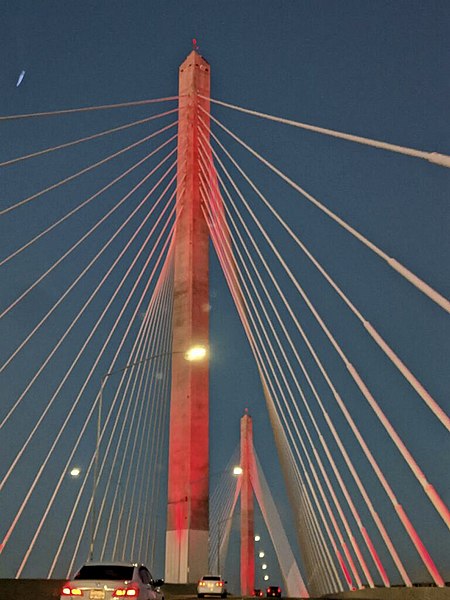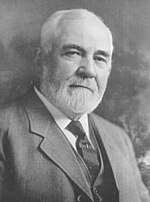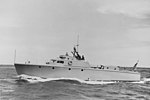Long Beach International Gateway

The Long Beach International Gateway is a cable-stayed bridge that carries six lanes of Interstate 710 and a bicycle/pedestrian path in Long Beach, California, west across the Back Channel to Terminal Island. The bridge replaced the Gerald Desmond Bridge, which was completed in 1968 and named after Gerald Desmond, a prominent civic leader and a former city attorney for the City of Long Beach. The 1968 steel arch bridge developed numerous issues, and the Port of Long Beach decided it would be best, from an economical perspective, that the bridge be replaced. After several years of studies, a cable-stayed bridge with 205 feet (62 m) of vertical clearance to be built north of the existing bridge was identified as the preferred alternative in the final environmental impact report (2010 FEIR).The new bridge allows access to the port for the tallest container ships after the older bridge is demolished. It is the first long-span cable-stayed bridge in California and the first and only cable-stayed bridge in the Los Angeles metropolitan area. For the bridge to be so tall, long approaches were required to allow trucks to cross. A joint venture of Parsons Transportation Group and HNTB performed preliminary engineering for the main span and the approaches. Earlier reports had studied and discarded various alternatives, including an alternative alignment with a new bridge south of the existing bridge, rehabilitation of the existing bridge, and a tunnel instead of an elevated bridge.
Excerpt from the Wikipedia article Long Beach International Gateway (License: CC BY-SA 3.0, Authors, Images).Long Beach International Gateway
Long Beach International Gateway, Long Beach
Geographical coordinates (GPS) Address Nearby Places Show on map
Geographical coordinates (GPS)
| Latitude | Longitude |
|---|---|
| N 33.76488 ° | E -118.2213 ° |
Address
Long Beach International Gateway (Gerald Desmond Bridge)
Long Beach International Gateway
90831 Long Beach
California, United States
Open on Google Maps









